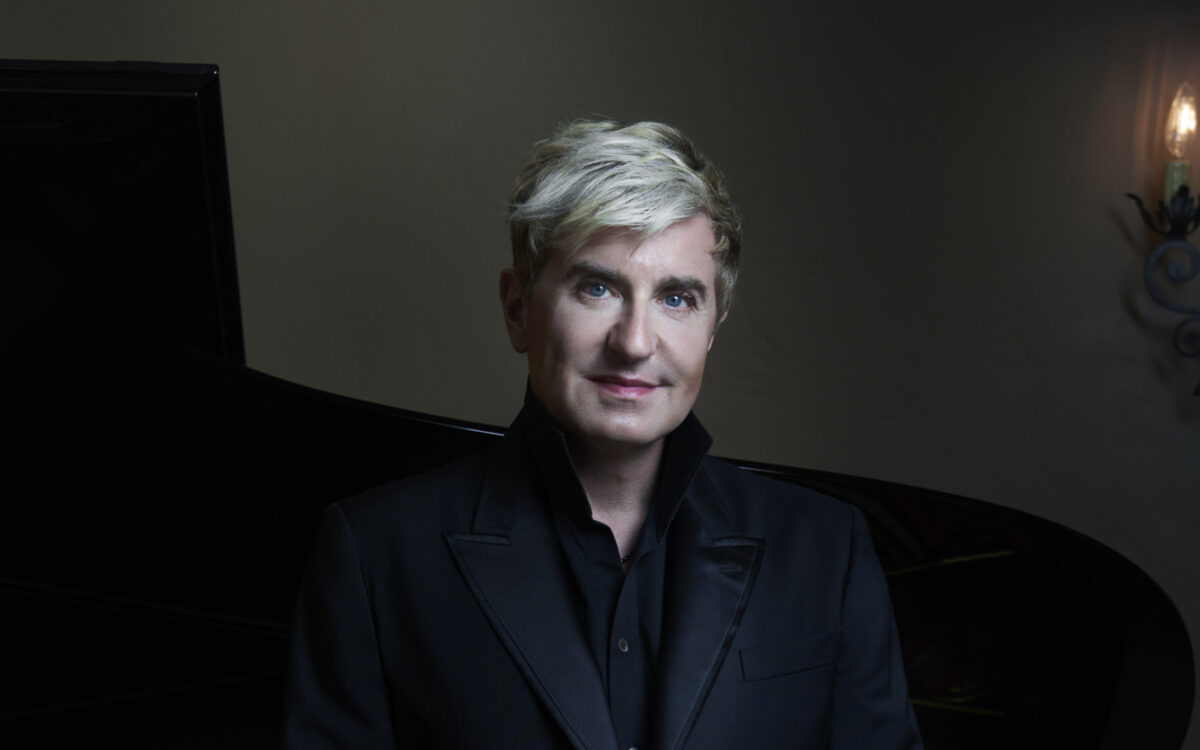Piano Concerto No. 5, Egyptian
Camille Saint-Saëns was born in Paris, France, on October 9, 1835, and died in Algiers on December 16, 1921. He composed his Piano Concerto No. 5 in Cairo, Egypt, in March and April 1896 and was soloist in the first performance on June 2 that same year in the Salle Pleyel, Paris, with Paul Taffanel conducting the orchestra of the Société des Concerts.
In addition to the solo piano, the score calls for an orchestra of 2 flutes, piccolo, 2 oboes, 2 clarinets, 2 bassoons, four horns, 2 trumpets, 3 trombones, timpani, tam-tam, and strings (first and second violins, violas, cellos, and double basses). The concerto is about 29 minutes long.
If Saint-Saëns had been just a pianist, he would have been as famous and as acclaimed as Anton Rubinstein, Leschetizky, Paderewski, or any other lion of the age. His piano concertos, all of which he played himself, provide scintillating evidence of his astonishing technique both in weight and nimbleness. Yet playing the piano was only one of many activities, not all of them concerned with music, that consumed him over a very long life. He was an immensely productive composer, of course, producing music “as an apple tree bears apples,” as he described it himself. No genre of music was untouched—operas, symphonies, concertos, chamber music, songs, choral music, all in abundance; even a film score, one of the first ever composed. For many years he was organist at the Madeleine church in Paris; he conducted frequently; he wrote articles for the press and published half a dozen books; he wrote poetry and plays; he took a close interest in astronomy, archaeology, philosophy, and classical literature; he spoke many languages and traveled all over Europe giving concerts, including a series of all the Mozart piano concertos in London; he went to Scandinavia, Russia, Indochina, and Uruguay; he was involved in the whole spectrum of music-making in France for all of his career, and he was a prime mover in the Société Nationale de Musique. His tastes ranged effortlessly from Wagner to the Baroque, and the composers he most admired were Mozart, Rameau, Gluck, Schumann, Berlioz, and Liszt. He was a modernist and a reactionary at the same time, an atheist who composed a huge quantity of religious music, a deeply serious and thoughtful composer whose best-known work is the frivolous Carnival of the Animals.
Such a man is rare in any culture, and now that we can test his achievement solely by his music and his writings, his immense gifts are not so readily appreciated. Much of his music is bound to remain in obscurity, and there are few who would be bold enough to measure his achievement as a composer against Wagner or Verdi or Brahms. His works are appealing, superbly crafted, and full of surprises. Only at rare moments (such as in the second act of his opera Samson et Dalila) does he shake the heavens. He is very French in his desire to impress his hearers with the delicacy and rightness of every movement, to display impeccable taste, and to paint always in sensitive colors. His word-setting is faultless, his fugues are full of ingenious invention. His piano writing bears the signature of a brilliant pianist, and it takes a player of special gifts to throw off those cascades of scales and arpeggios as though they were the easiest thing in the world—as for him they were.
His first four piano concertos appeared at steady intervals between 1858 and 1875. The Second, which he composed in seventeen days, has remained his most popular concerto. After the age of 40 he spent more and more time vacationing in North Africa, the outcome of which was the Suite algérienne for orchestra in 1880, a colorful work for piano and orchestra simply entitled Africa in 1891, and this Fifth Piano Concerto in 1896. Like the famous Bacchanale at the end of Samson et Dalila these all contain musical allusions to Moorish music in one form or another, although except in the case of Africa he was too much of a classicist ever to allow these elements to be more than glancing evocations of distant places.
In January 1896 Saint-Saëns went to Milan for the Italian premiere of his opera Henry VIII, and from there traveled on to Cairo for his customary winter vacation. He ventured up the Nile into Upper Egypt and then settled into a Cairo hotel to write the Fifth Piano Concerto. As usual the music flowed from his pen, and it took just over three weeks to complete. His first ideas for the work had been noted down on a holiday two years before, when he went to the Canary Islands, but the main work was completed in Cairo in time to include the new concerto in a momentous concert in the Salle Pleyel, Paris, marking the fiftieth anniversary of his first appearance there in 1846 at the age of 10. This took place on June 2, 1896, with the great violinist Pablo de Sarasate, a close friend, sharing the bill. The concerto was published the same year with a dedication to Louis Diémer, a fine pianist who played it many times. Saint-Saëns continued to play it himself even past his 80th birthday.
There is nothing Egyptian about the concerto except in the second movement. The outer movements are perfectly European and, one might say, Classical in their balance of themes and tempos. The opening theme in the first movement has an affinity with plainchant, like many of Saint-Saëns’s tunes, and the second main tune recalls Brahms in its broad sweep. The finale is a brilliant tour de force that actually exhibits little force. Its magic lies rather in its fleetness and ingenuity, and it keeps the soloist scampering from one end of the keyboard to the other.
The most remarkable music is to be found in the middle movement, which is unlike anything else by Saint-Saëns or anyone else. It is not simply that most of the themes have a Middle Eastern character, based on modal intervals; it proceeds strangely from one episode to another without any apparent direction, like an improvisation, although the balance of the movement is cleverly controlled. The one theme that is said to have a Nubian origin in fact sounds more northern, and has no Arabic intervals at all:
Two curious passages stand out. In one the left hand plays a series of notes that are colored by the right hand with soft chords that give it the sound of an organ mixture stop, a device later used by Ravel in his Boléro. The other is a strange chirruping in the distant key of F-sharp major, beneath which a Chinese melody is heard against soft blows on the tam-tam. Was Saint-Saëns recalling other journeys to distant parts, or just being playful?
Hugh Macdonald
Hugh Macdonald taught music at the universities of Cambridge and Oxford and was Professor of Music at Glasgow and at Washington University in St Louis. His books include those on Scriabin, Berlioz, Beethoven, and Bizet, and he was general editor of the 26-volume New Berlioz Edition. His Saint-Saëns and the Stage was published in 2019 by Cambridge University Press.
The first American performance of Saint-Saëns’s Piano Concerto No. 5 was on March 7, 1898, in Carnegie Hall, New York, with pianist Raoul Pugno and the Chicago Orchestra under the direction of Theodore Thomas. Saint-Saëns himself played the concerto in New York in 1906.
The first Boston Symphony performances of the concerto featured pianist Ferruccio Busoni with Wilhelm Gericke conducting on March 4 and 5, 1904.


